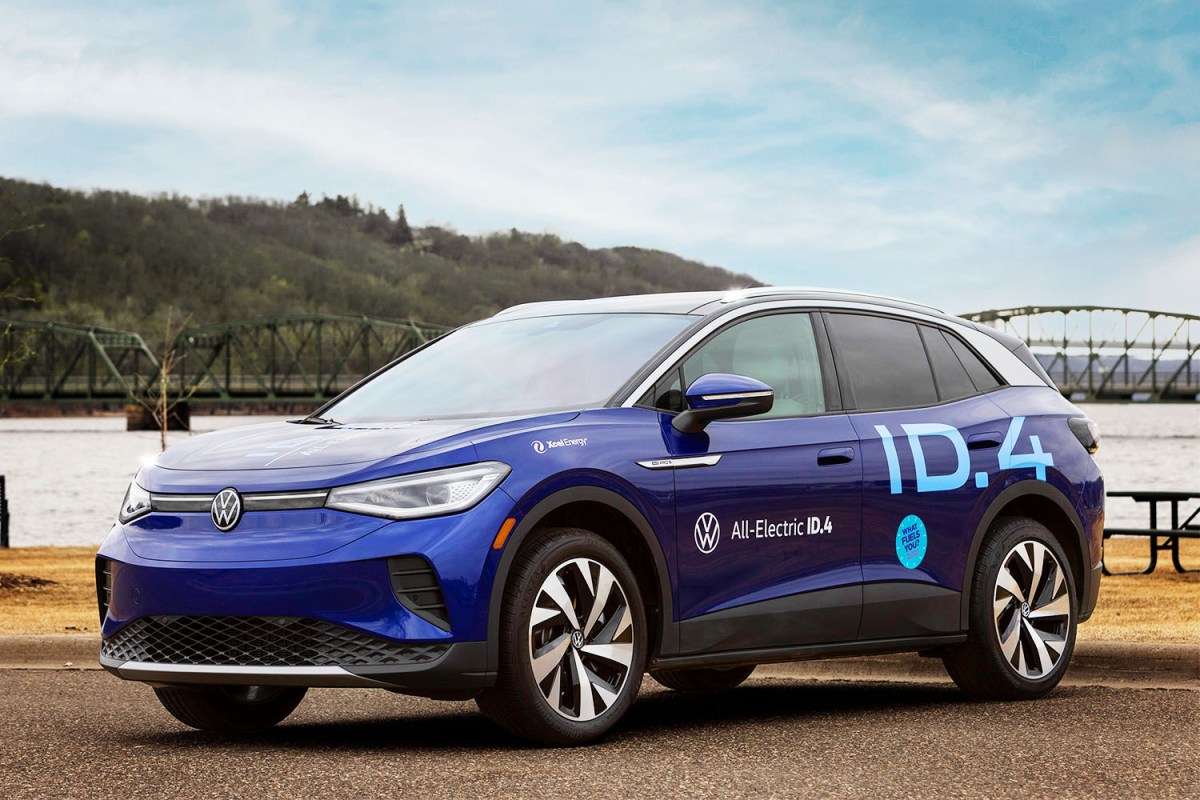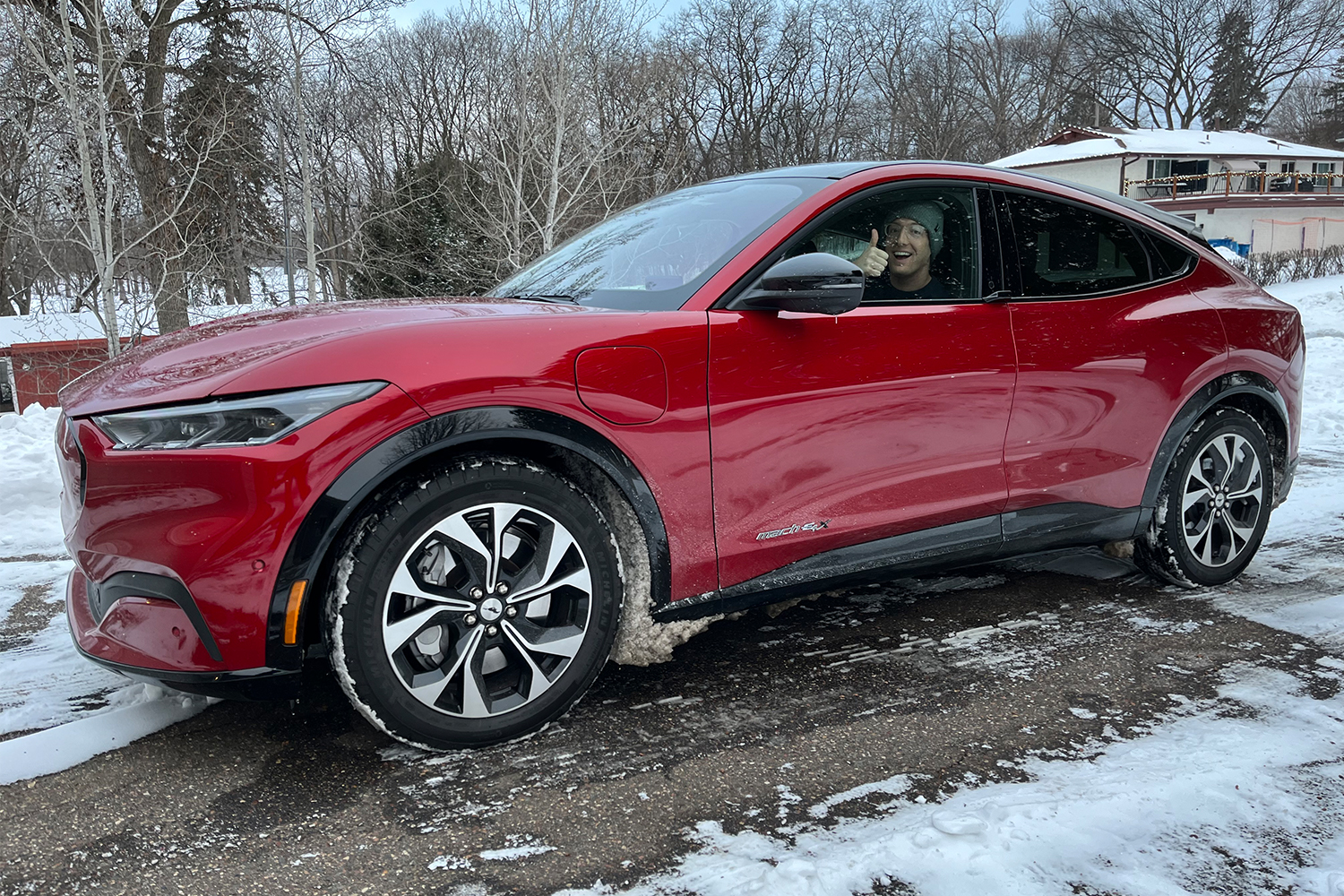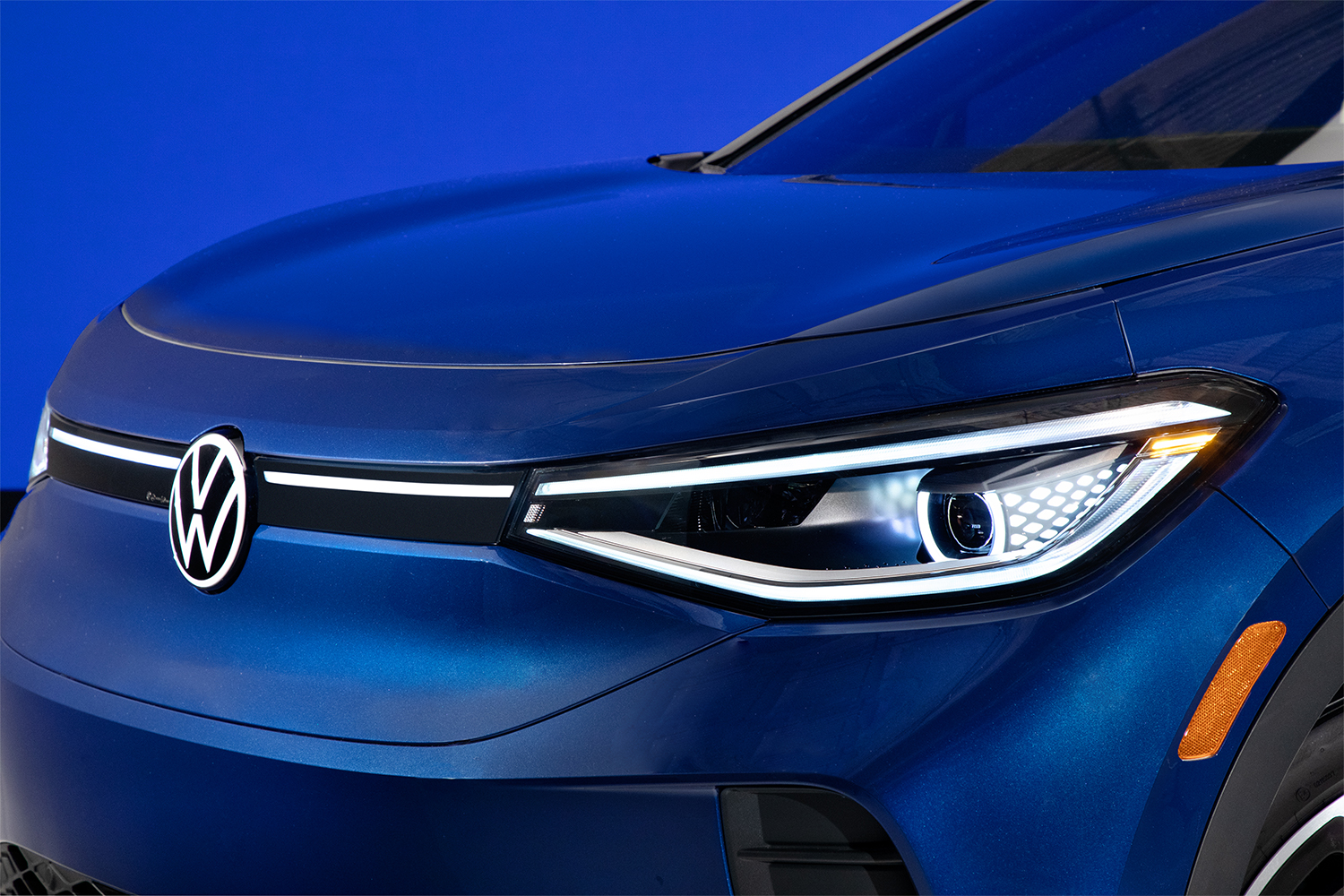For many Americans, the main question to ask when buying a car isn’t “how will I use this vehicle on most days?” It’s “what’s the most extreme way I will ever use this vehicle?” That’s how daily office commuters end up driving SUVs to and from work all by themselves. All they really need is a two-seat Smart car (or a bus pass), but because they want the option to pack the whole family and the dog in for a weekend getaway once every three months, they opt for something like a Toyota RAV4.
This worst-case scenario mentality has also partly influenced America’s adoption of electric vehicles. That is, our lack of adoption. At the beginning of 2022, less than 1% of all cars, SUVs and light-duty trucks in the country were fully electric, according to Reuters. Yes, cost is a huge barrier to entry at the moment, but so is range anxiety. Even though Americans drive on average 39 miles a day, which is a simple trip for any modern EV to make multiple times without charging, prospective car buyers immediately think about the longest, most remote drives they’ve ever taken. Can electric vehicles handle that kind of mileage?
For the answer to that question, don’t ask your car dealer who doesn’t own an EV. Ask Erika Gilsdorf.
The Minnesotan has logged thousands of miles on an all-electric Volkswagen ID.4 in the last few months, driving from Wisconsin out to the snowy mountains of Colorado, down to the deserts of Utah and Arizona, then back up through Nebraska to her home state. Before this road trip of epic electric proportions, Gilsdorf had never driven a battery electric vehicle herself, so she’s the perfect stand-in for the American driver wondering whether or not to make the switch. In fact, it wasn’t that long ago that she was skeptical of the entire EV affair.
“I live in Detroit Lakes, Minnesota, and I’m a video producer and was asked to do coverage of a local EV event,” she tells InsideHook. This was a few years ago. “And I was like, ugh, I don’t want to do this, because I was thinking EVs were for the West Coast, very wealthy, out of our reach…and then these people show up that are just regular people from town.”
“That is a common misconception that people in more rural areas — in the heartland like Minnesota — think that EVs are not reachable,” she says. Then she had an epiphany. “So I’m like, I’m going to do it. I’m going to broaden awareness on that.”
Her eye-opening campaign has taken the form of “What Fuels You,” a road trip video series where she’s been traversing the country in various electrified vehicles to gather stories of people tackling issues around climate change and the environment. In 2019, she rode along as a passenger in an all-electric Chevrolet Bolt throughout Minnesota to kick off the initiative. In 2021, she was sponsored by Mitsubishi and pulled a tiny house across the country with an Outlander plug-in hybrid. Then, this year, Volkswagen supported her biggest challenge yet: driving solo across the country in the ID.4 Pro S AWD SUV.
“I was nervous about driving an EV,” she says about the start of her trip. Months into it, she has a new outlook. “I have no idea why anybody’s nervous about driving an EV now.”

The Great Electric American Road Trip
Before she officially hit the road, Gilsdorf met up with two brothers who are both ID.4 owners in Somerset, Wisconsin. Their best advice? “Trust your car,” she says.
When driving the electric SUV, the vehicle displays how much charge the battery has left and how many miles you can drive. So when Gilsdorf noticed that the battery started draining faster in 70 mile-per-hour winds that walloped her vehicle in Nebraska, she stopped to charge earlier than she had originally planned; when the battery dipped lower on a particularly frigid day in the mountains, she drove more cautiously, but noticed the charge actually rose when it heated up the next morning; and when she wanted to drive across a huge swath of steamy Arizona without plugging in, she simply turned off the air conditioning (as heating and cooling systems can drain the battery), which she really didn’t need anyway.
“I was kind of seeing how far the car could go,” she says, “and it did just fine!”
While Gilsdorf is comfortable with the EV lifestyle after months on the road, there are a few key differences between electric and gas road tripping that newcomers need to know about.
First, there’s the question of mapping out your route. In a normal situation, you simply plan your trip based on driving from point A to point B the fastest, because there are gas stations everywhere (or you’re charged up enough to go there and back). But right now in an EV, you’ll need to plan longer routes based on where there are charging stations, specifically Level 3 DC fast-charging stations that are best for powering up quickly on the road. Most modern EVs, like the ID.4, include chargers as part of the navigation system, so it’s easy to plan your drive around them and stop to top up long before you get close to 0% charge. (In Gilsdorf’s case, she liked to charge more often just to be on the safe side.) It takes a little bit more planning than simply typing a destination into Google Maps, but not much.
What if there are problems at the charging station? Gilsdorf ran into a few of the classic snags, but remedied them quickly.
In a one charging station town, she rolled in and saw the plug was occupied, so she ran errands to pass the time. When she returned, the other EV was still powering up, so she tapped on the window. It turned out the driver had fallen asleep. “Her steering wheel was imprinted on her face,” Gilsdorf laughs. She learned an electric car etiquette rule that day: “No sleeping at the charging point.”
In another city at another charging bank, she hooked up the ID.4 only for the vehicle to display a slow rate of charge. But there was no attendant on-site to complain to, so what’s a poor EV driver to do? Gilsdorf called the number on the pillar and the most surprising thing happened.
“An actual person actually answered,” she says. Once when she called, the agent on the line told her to move down to another station in the same row of chargers because it’s best not to use a plug on the same pillar as another car. In another instance of calling the help line, she was told to move down a spot because that particular charging port wasn’t working as well as the others. “That’s nice to know that there’s a support [person] on the other side.”

The Accidental EV Evangelist
Gilsdorf’s specific ID.4 model is EPA-rated at 245 miles of range and can add up to 70 miles in 10 minutes at a DC fast charger. So it’s certainly not as quick as filling up gas at the pump, but it wasn’t prohibitively slow, either. Some of the time, she used her pitstops to get work done on her laptop (at least when there was wifi available). Other times, she was occupied by the two things all EV drivers in the U.S. can expect to run into: questions and camaraderie.
“People will yell at me from across [the parking lot], ‘Hey, is that an EV?’” Gilsdorf laughs. “Non-EV drivers come and ask questions and…they want a tour.” They want to get the real story from a flesh-and-blood person they can talk to face to face, rather than trying to assess the viability of an electric car from the internet’s glut of Tesla fanboys, anti-EV crusaders and general online clickbait one way or another.
Then there’s the instant connection she formed with other EV drivers, mostly at charging stations, where they plugged in, stretched their legs and checked out each other’s vehicles. She met super early adopters who have been on the electric bandwagon for years, as well as newcomers like her who were experiencing the vehicles for the first time. “One young kid” stood out in particular. He was from the East Coast, but had never been further west than Baltimore, and here he was driving solo all the way to the Pacific Ocean in an electric car.
“He was a little nervous, but…it wasn’t an EV-driving thing, it was just ‘I’ve never traveled’ nervousness,” she says. When it came to the car, she said that he had “zero fear” of using an all-electric vehicle.
It makes sense. He’s grown up in the beginning of the electric car age, so it’s not as scary for him to make the transition from internal combustion engine to EV. That said, being of an older generation herself, Gilsdorf did get a particular pleasure out of forgoing one previous automotive necessity.
“I tell you, the best thing though is I did not have an awareness of gas prices,” she adds. “There is a beautiful thing about driving past gas stations and going to your EV charging station.”
Well, as long as no one’s sleeping in your charging spot.
This article appeared in an InsideHook newsletter. Sign up for free to get more on travel, wellness, style, drinking, and culture.



























